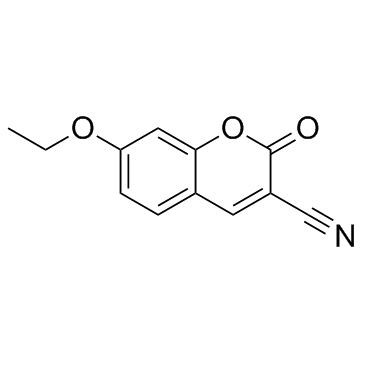Mechanism-based in vitro screening of potential cancer chemopreventive agents.
Clarissa Gerhäuser, Karin Klimo, Elke Heiss, Isabell Neumann, Amira Gamal-Eldeen, Jutta Knauft, Guang-Yaw Liu, Somkid Sitthimonchai, Norbert Frank
文献索引:Mutat. Res. 523-524 , 163, (2003)
全文:HTML全文
摘要
Identification and use of effective cancer chemopreventive agents have become an important issue in public health-related research. For identification of potential cancer chemopreventive constituents we have set up a battery of cell- and enzyme-based in vitro marker systems relevant for prevention of carcinogenesis in vivo. These systems include modulation of drug metabolism (inhibition of Cyp1A activity, induction of NAD(P)H:quinone reductase (QR) activity in Hepa1c1c7 murine hepatoma cell culture), determination of radical scavenging (DPPH scavenging) and antioxidant effects (scavenging of superoxide anion-, hydroxyl- and peroxyl-radicals), anti-inflammatory mechanisms (inhibition of lipopolysaccharide (LPS)-mediated nitric oxide (NO) generation by inducible NO synthase (iNOS) in Raw 264.7 murine macrophages, cyclooxygenase-1 (Cox-1) inhibition), and anti-tumor promoting activities (inhibition of phorbol ester-induced ornithine decarboxylase (ODC) activity in 308 murine keratinocytes). We have tested a series of known chemopreventive substances belonging to several structural classes as reference compounds for the identification of novel chemopreventive agents or mechanisms. These include organosulfur compounds (phenethylisothiocyanate (PEITC), diallylsulfide, diallyldisulfide), terpenes (limonene, perillyl alcohol, oleanolic acid, 18-beta-glycyrrhetinic acid), short-chain fatty acids (sodium butyrate), indoles (indole-3-carbinol), isoflavonoids (quercetin, silymarin, genistein), catechins ((-)-epigallocatechin gallate (EGCG)), simple phenols (ellagic acid, resveratrol, piceatannol, curcumin), pharmaceutical agents (piroxicam, acetylsalicylic acid, tamoxifen), and vitamins/derivatives (ascorbic acid, Trolox). We confirmed known chemopreventive mechanisms of these compounds. Additionally, we could demonstrate the usefulness of our approach by identification of hitherto unknown mechanisms of selected agents. As an example, we detected anti-inflammatory properties of PEITC, based on NF-kappaB-mediated inhibition of NO production. Further, PEITC inhibited phorbol ester-induced superoxide anion radical production in granulocytes, and ODC induction in the 308 cell line. These mechanisms might contribute to the chemopreventive potential of PEITC.Copyright 2002 Elsevier Science B.V.
相关化合物
| 结构式 | 名称/CAS号 | 分子式 | 全部文献 |
|---|---|---|---|
 |
3-氰基-7-乙氧基香豆素
CAS:117620-77-6 |
C12H9NO3 |
|
Potent inhibition of CYP1A2 by Frutinone A, an active ingred...
2012-10-01 [Xenobiotica 42 , 989-1000, (2012)] |
|
Physicochemical and drug metabolism characterization of a se...
2014-10-01 [Expert Opin. Drug Metab. Toxicol. 10(10) , 1313-24, (2014)] |
|
Effects of artemisinin antimalarials on Cytochrome P450 enzy...
2014-07-01 [Xenobiotica 44(7) , 615-26, (2014)] |
|
Preclinical Pharmacokinetics and In Vitro Metabolism of Asun...
2015-09-01 [J. Pharm. Sci. 104 , 2813-23, (2015)] |
|
Chemopreventive and therapeutic potentials of thymoquinone i...
2015-07-01 [J. Nat. Med. 69 , 313-23, (2015)] |